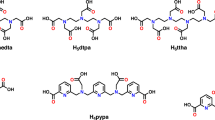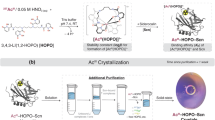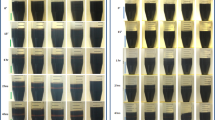Abstract
DURING recent years there has been considerable interest in the use of chelating agents to remove certain radioelements deposited in the body. Ethylenediamine tetraacetic acid has been investigated extensively, and more recently there have been reports that diethylenetriamine pentaacetic acid is more effective than ethylenediamine tetraacetic acid for the removal of deposited plutonium1, and that it also increases the excretion of thorium from the body2. We have studied the effect of these two chelating agents on the removal of americium-241 from the rat. Preliminary experiments showed that both reagents significantly increased the excretion of this nuclide and that diethylenetriamine pentaacetic acid was approximately twice as effective as ethylenediamine tetraacetic acid.
This is a preview of subscription content, access via your institution
Access options
Subscribe to this journal
Receive 51 print issues and online access
$199.00 per year
only $3.90 per issue
Buy this article
- Purchase on SpringerLink
- Instant access to full article PDF
Prices may be subject to local taxes which are calculated during checkout
Similar content being viewed by others
References
Smith, V. H., Nature, 181, 1792 (1958).
Schubert, J., and Fried, J. F., Nature, 185, 551 (1960).
Turner, R. C., Radley, J. M., and Mayneord, W. V., Brit. J. Radiol., 31, 397 (1958).
Author information
Authors and Affiliations
Rights and permissions
About this article
Cite this article
SOWBY, F., TAYLOR, D. Removal of Internally Deposited Americium by Chelating Agents. Nature 187, 612 (1960). https://doi.org/10.1038/187612a0
Issue date:
DOI: https://doi.org/10.1038/187612a0



